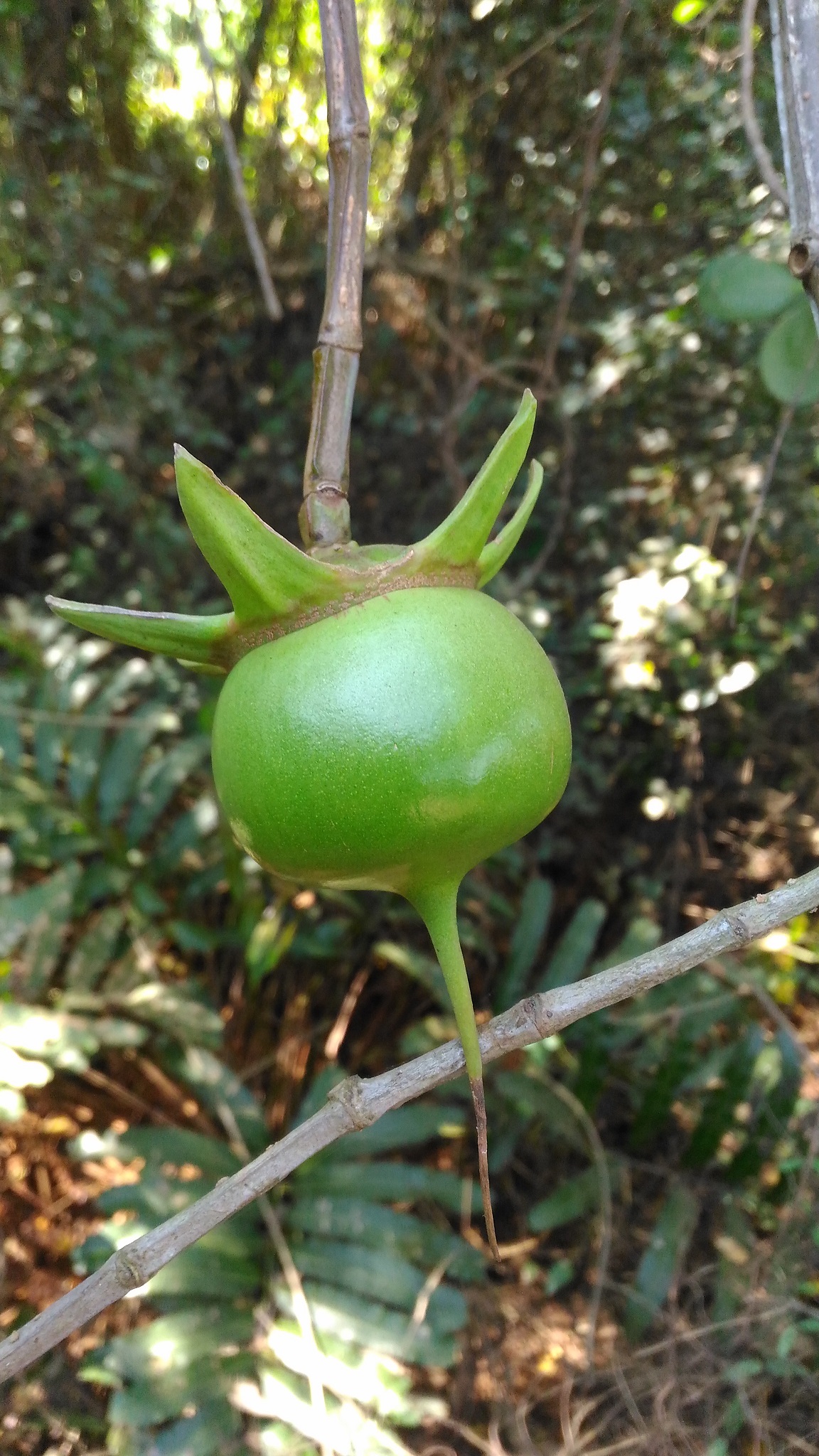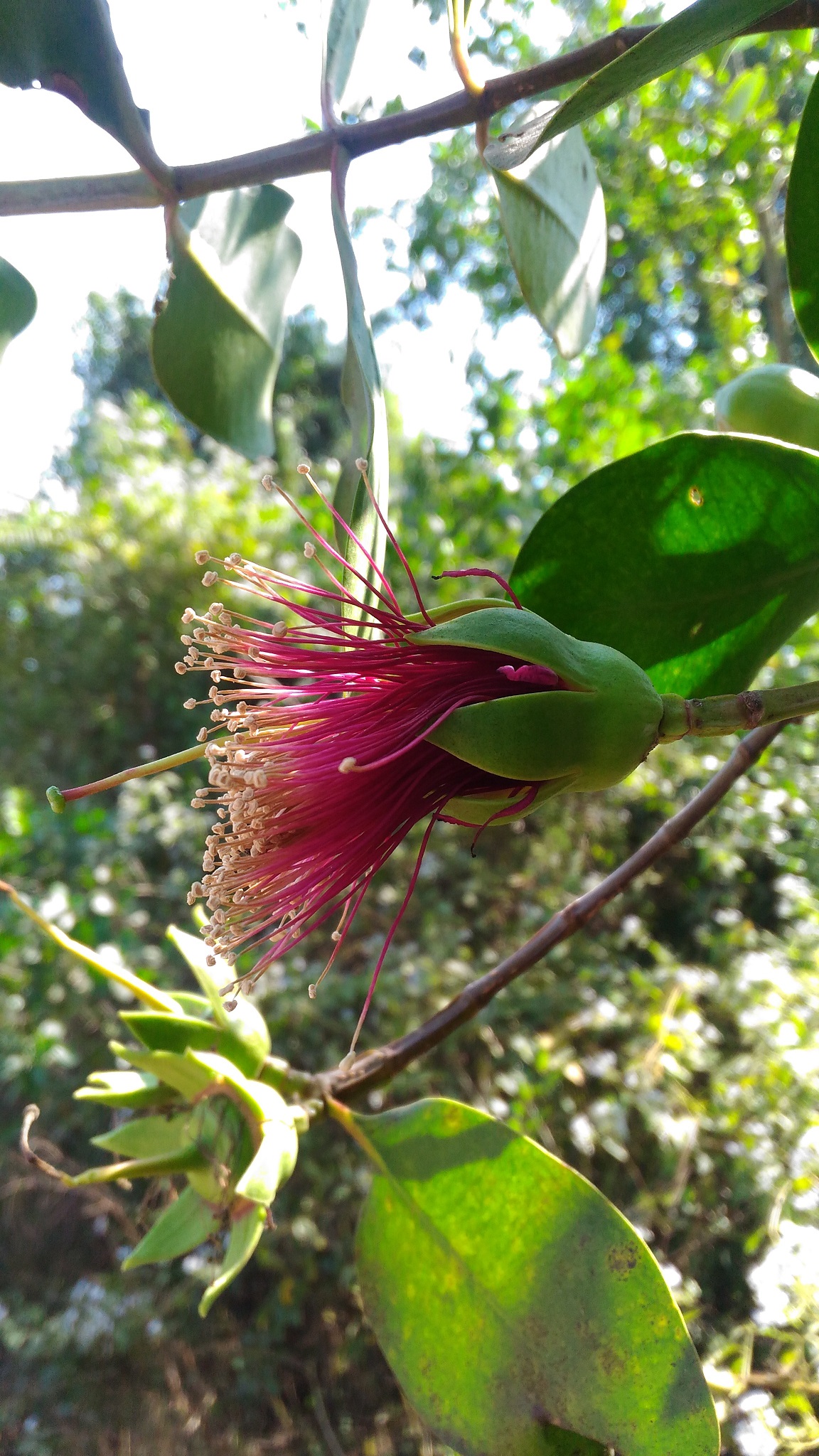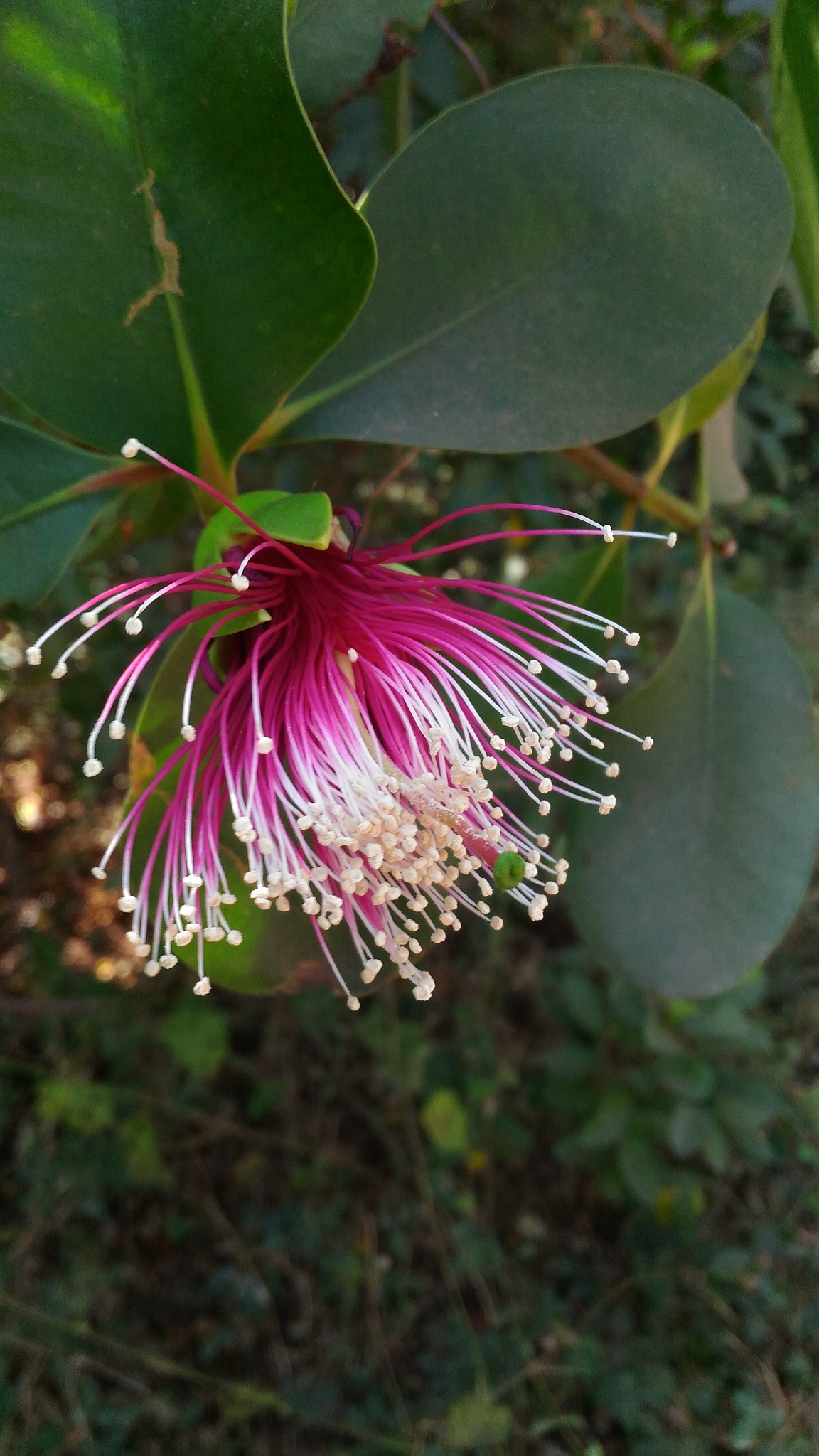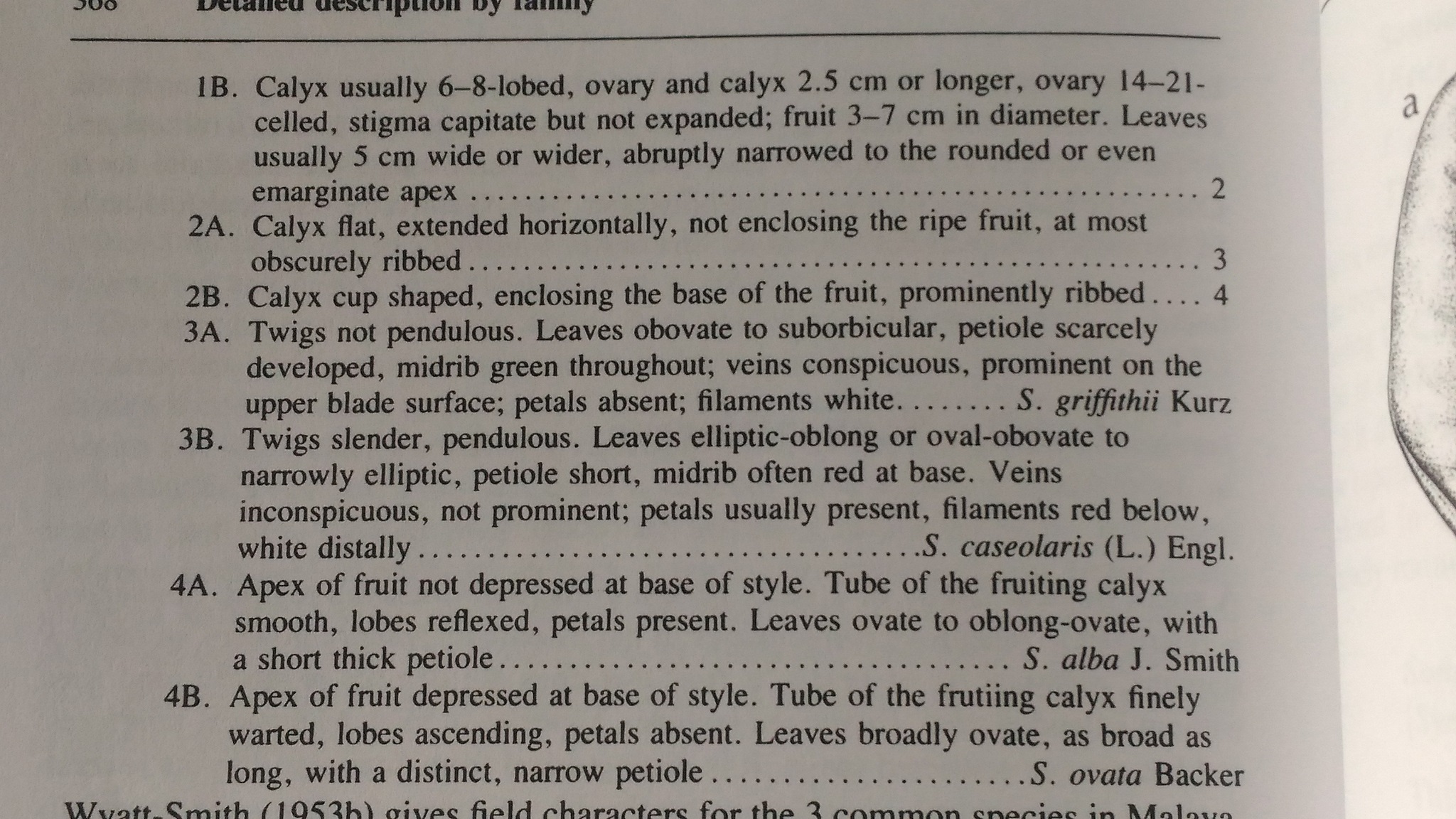|
Sonneratia caseolaris (L.) Engl., Nat. Pflanzenfam. Nachtr. 1: 261 1897. (syn: Blatti acida (L. f.) Lam.; Rhizophora caseolaris L.; Sonneratia acida L. f.; Sonneratia evenia Blume; Sonneratia neglecta Blume; Sonneratia obovata Blume; Sonneratia ovalis Korth.);
. Evergreen trees, to 8 m high; pneumatophores 1 m long and 6 cm diameter, straight, stout, corky, conical, brownish grey or orange-coloured, outer thin layer flaky; bark brown, cracked; branchlets pendulous; angled, greenish-brown, glabrous; nodes swollen with 2 lateral pair of circular glands. Leaves simple, opposite-decussate, estipulate; petiole 5-10 mm long, stout, red, glabrous; lamina 4-11 x 3.5-6.5 cm, broadly ovate or broadly elliptic, base cuneate, apex mucronate, emarginate or obtuse, glabrous, coriaceous, thick, slightly fleshy, green; lateral veins 10-15 pairs, parallel, looped near the margin forming intramarginal nerve, slender, obscure, intercostae reticulate, obscure. Flowers bisexual, pink, 6 x 5-7 cm, terminal, solitary; bracts rudimentary, in conspicuous; pedicel 5-10 mm long, quadrangular, glabrous; calyx green outside, white within, calyx cup 1.8 x 2 cm, smooth, glabrous, enclosing the basal portion of the pistil; lobes 6, 2 x 1 cm, oblong, elliptic, acute, greenish outside, purplish-white within, thick, coriaceous, glabrous, persistent; petals 6, 2 x 0.2 cm, free, purple to violet red, acuminate, apex wrinkled and coiled, membranous, glabrous, cauducous; stamens many, free, inflexed in bud, inserted in several rows on the terminal raised rim of the calyx cup, conspicuous, cauducous; filaments upto 4.2 cm long, reddish below, white above, thread like, anthers reniform, medifixed, bilobed; ovary 1 cm across, globose, white, many celled, ovules many in each cell; style coiled in bud, to 6 cm, white, terete; stigma capitate. Fruit a drupe, 7 cm across, globose, slightly flattened, calyx lobes horizontal, pericarp smooth, glabrous; seeds many, embedded in the fleshy pulp of the placenta, angular with rough surface. Flowering and fruiting: Throughout the year
Along backwaters and mangrove forests
Indo-Malesia and Australia
(From India Biodiversity Portal , Attributions- Dr. N Sasidharan (Dr. B P Pal Fellow), Kerala Forest Research Institute, Peechi) . Sonneratia caseolaris, also known as Mangrove Apple or Crabapple Mangrove (Thai: ลำพู), is a species of plant in the Lythraceae family. Sonneratia caseolaris : 3 posts by 2 authors. Attachments (4) This is regarding recent postings on Sonneratia. In several images posted, the stamens are not seen and only the calyx cup is visible (the filaments are delicate and easily fall off). I guess differentiating between the two closely related species viz. caseolaris and alba in field is tricky. So thought of sharing some information regarding the distinguishing characters.
The visual differences between closely allied Sonneratia alba & S. caseolaris are :
a. The filament colour is crimson red in S. caseolaris and white in S. alba.
b. Calyx flat, not enclosing the ripe fruit: S. caseolaris & Calyx cup shaped, enclosing the ripe fruit: Sonneratia alba. (In case of S.alba, the calyx lobes are reflexed.)
Attached herewith are images of S.caseolaris (flower & fruit) photographed in Goa.
Also attached herewith is the dichotomous key from the book ‘ The Botany of Mangroves’ by P. B. Tomlinson (popularly known as The Mangrove Bible).
I hope this helps.
. 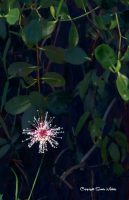 Sonneratia caseolaris @ Bhitarkanika, Odisha, January 25, 2023.: 1 image. Sonneratia caseolaris @ Bhitarkanika, Odisha, January 25, 2023. Photographed during a boat ride in the esturine channels of ?Brahmani river.
While I identified the flower using Google lens I will like to record my appreciation to Adittya Dharap ji for his post of November 14, 2017, differentiating between S. alba (white filaments) and S. caseolaris (crimson/ red filaments) on the group.
Please confirm/ correct, as required.
Sonneratia caseolaris only based on leaves and flower characters, I too experienced with this species a year back at the same place.
Yes, appears close as per images at
. References: |
Sonneratia caseolaris
Updated on December 24, 2024

